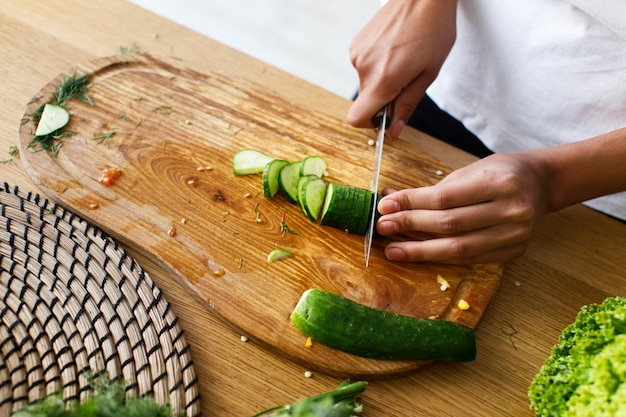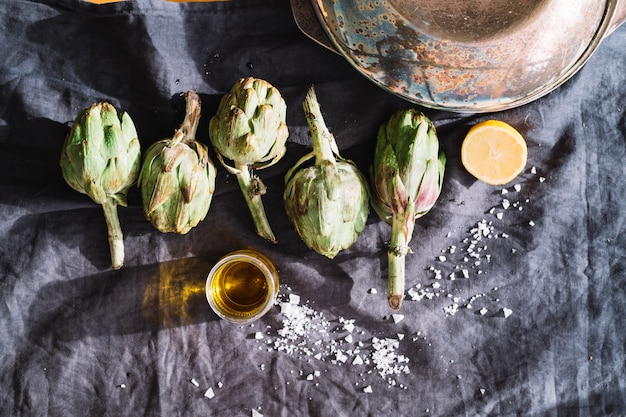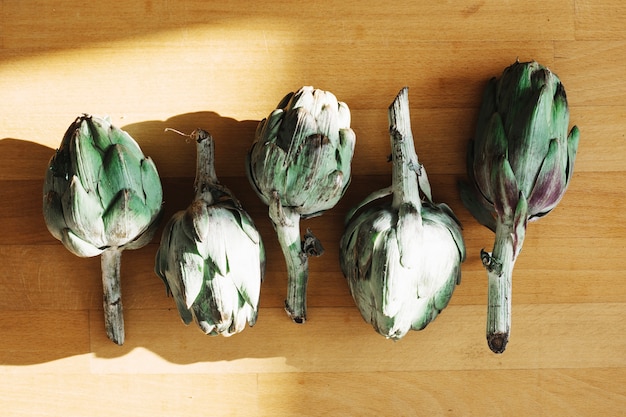(Part 1) The Great Cactus Family: A Diversity of Spiky Delights

Choosing Your Cactus: It's Not All Prickly Pears
The first step is to figure out which cactus you want to use. There are loads of different varieties, each with its own unique flavour and texture. Let's start with the most common:- Prickly Pear (Opuntia ficus-indica): This is the star of the cactus cooking show. The pads (nopales) are tender and slightly sweet, and they have a mild, vegetal flavour that reminds me of green beans. The fruit (prickly pears) is a juicy and refreshing treat, with a sweet, slightly tart flavour that's perfect for making jams, salsas, and even cocktails.
- Cholla (Cylindropuntia spp.): Cholla is a bit more robust than prickly pear, with a tougher, more fibrous texture. It has a deeper, more earthy flavour that reminds me of artichoke hearts. Cholla is often used in stews and soups where its flavour can really shine.
- Barrel Cactus (Ferocactus spp.): This cactus is known for its large, barrel-shaped body and its impressive spines. It's not as commonly eaten as other cacti, but its flesh can be cooked and used in dishes. The flavour is mild and slightly sweet, similar to a mild zucchini.
- Saguaro (Carnegiea gigantea): This iconic cactus is a symbol of the American Southwest. The fruit is edible and has a sweet, slightly tart flavour. It's often eaten fresh, but it can also be used in jams and jellies.
I’ve tried them all, and let me tell you, it’s quite an experience! Each one has its own personality, and the flavour profiles are surprisingly different. But remember, not all cactus is created equal, so always do your research before you pick one to cook with.
Identifying the Cactus: A Visual Guide
One thing I’ve learned over the years is to really pay attention to the details. We’re talking about things like the shape of the pads, the colour of the spines, and the overall size of the cactus. It’s all about getting familiar with the plant, so you know what you’re working with.
Here are some key features to help you distinguish between common edible cacti:
| Cactus Type | Pad Shape | Spines | Fruit |
|---|---|---|---|
| Prickly Pear | Flat, oval, with a distinct "mitten" shape at the tip | Short, sharp, and usually clustered in groups | Oval, red, purple, or yellow, with a thin skin and juicy flesh. |
| Cholla | Cylindrical, segmented, with sharp spines | Long, barbed, and often clustered in groups | Oval, small, and usually red, with a tough skin and slightly tart flesh. |
| Barrel Cactus | Round, barrel-shaped, with ribs | Long, sharp, and often hooked | Red, pink, or yellow, with a thick skin and sweet, slightly tart flesh. |
| Saguaro | Tall, columnar, with branches in older plants | Short, sharp, and scattered | Red, yellow, or orange, with a thin skin and sweet, juicy flesh. |
This table is a great starting point, but it’s always a good idea to double-check with a local expert or reference guide. You want to make sure you’ve got the right cactus before you start chopping and cooking.
(Part 2) The Art of Cactus Preparation: A Prickly But Rewarding Process

Getting Rid of Those Prickly Spines: A Crucial Step
Okay, let’s face it, the spines are the main obstacle between you and a delicious cactus meal. But don't worry, you’ve got this! There are a few different methods to deal with these prickly friends.
I’ve tried a few methods over the years, and let me tell you, some are more effective than others. The first thing you want to do is wear gloves, because trust me, getting a spine stuck in your finger is not fun!
- The Burning Method: This is a classic technique used for centuries by indigenous people. You simply hold the cactus over an open flame for a few seconds, which burns off the spines and makes them easier to remove. This one’s a bit intense, but it works.
- The Scrape Method: Use a sharp knife or a kitchen scraper to carefully scrape the spines off. This method requires a bit more patience, but it’s a good option for smaller cacti.
- The Peeling Method: For some cacti, like prickly pear pads, you can simply peel off the outer layer of skin, which includes the spines. This is the easiest method, but it can be a bit messy.
No matter which method you choose, be sure to wear gloves and goggles to protect yourself. It’s all about being prepared and taking your time. And, remember, safety first!
Cutting and Cleaning Your Cactus: A Culinary Symphony
Once you’ve dealt with those spines, it’s time to get your cactus ready for the kitchen. Start by cutting the cactus into smaller pieces, depending on the recipe you’re making.
Then, give it a good rinse with cold water to remove any remaining dirt or debris. For prickly pear pads, you may want to peel off the outer layer of skin before cooking. This will help remove any remaining spines and make the pads more tender. For cholla, you might need to remove the tough outer layer, which can be done by scraping it off with a knife or peeling it away.
I find that a good sharp knife and a cutting board are your best friends when it comes to preparing cactus. Take your time and be precise, and soon you’ll have your cactus all ready to cook.
(Part 3) Cactus cooking techniques: A culinary adventure

Blanching: The Key to Tenderness
Blanching is a crucial step when cooking cactus. It helps to remove bitterness and make the cactus more tender.
Simply bring a pot of salted water to a boil, add your cactus pieces, and blanch for a few minutes. Then, drain the water and rinse the cactus with cold water. This helps to stop the cooking process and preserve the vibrant colour of the cactus.
I’ve learned that blanching is a real game-changer for cactus. It makes it much more palatable and easier to work with in recipes.
Sautéing: Adding a Touch of Flavour
Sautéing is a great way to add flavour and texture to cactus. Heat some olive oil in a pan over medium heat, then add your blanched cactus pieces.
Season with salt, pepper, and any other spices you like. Sauté for a few minutes until the cactus is tender and slightly browned.
I often like to add a bit of garlic, onions, or even some chilli peppers to my sautéed cactus. It really adds a depth of flavour that elevates the dish.
Grilling: A Smoky Delight
Grilling cactus is a fantastic way to bring out its smoky flavour. Marinate your cactus pieces in a mixture of olive oil, salt, pepper, and any other spices you like.
Heat your grill to medium heat and grill the cactus for a few minutes on each side, until it’s tender and slightly charred.
I love the smoky flavour that grilling gives to cactus. It's a perfect way to enjoy it on a warm summer day.
Other Techniques: Experiment and Explore
Don't be afraid to experiment with other cooking techniques! Cactus can be roasted, fried, pickled, or even used in desserts. The possibilities are endless!
(Part 4) Cactus Recipes: A culinary journey
The Classic Nopales Salad: A Fresh and Vibrant Start
This salad is a simple yet delicious way to enjoy prickly pear pads.
Ingredients:
- 1 pound prickly pear pads (nopales), blanched and sliced
- 1/2 red onion, thinly sliced
- 1/2 cup chopped cilantro
- 1/4 cup lime juice
- 2 tablespoons olive oil
- Salt and pepper to taste
Instructions:
- Combine all ingredients in a bowl and toss to coat.
- Chill for at least 30 minutes before serving.
The Hearty Cholla Stew: A Warm and Comforting Dish
This stew is a perfect example of how cholla can be used in a hearty and flavourful dish.
Ingredients:
- 1 pound cholla, diced
- 1 onion, chopped
- 2 cloves garlic, minced
- 1 tablespoon olive oil
- 1 (14.5 ounce) can diced tomatoes
- 1 (15 ounce) can black beans, drained and rinsed
- 1 (14.5 ounce) can chicken broth
- 1 teaspoon chili powder
- 1/2 teaspoon cumin
- Salt and pepper to taste
Instructions:
- Heat olive oil in a large pot over medium heat. Add onion and garlic and cook until softened.
- Add cholla, diced tomatoes, black beans, chicken broth, chili powder, and cumin. Bring to a boil, then reduce heat and simmer for 30 minutes, or until the cholla is tender.
- Season with salt and pepper to taste. Serve hot with a side of rice or tortillas.
The Sweet and Savoury Prickly Pear Salsa: A Burst of Flavour
This salsa is a delightful combination of sweet and savoury flavours that will brighten up any meal.
Ingredients:
- 1 cup prickly pear fruit, diced
- 1/2 cup red onion, diced
- 1/4 cup cilantro, chopped
- 1 jalape??o pepper, seeded and diced (optional)
- 2 tablespoons lime juice
- 1 tablespoon olive oil
- Salt and pepper to taste
Instructions:
- Combine all ingredients in a bowl and toss to coat.
- Chill for at least 30 minutes before serving.
Beyond the Basics: Exploring a World of Cactus Cuisine
These recipes are just a starting point. There are countless other ways to use cactus in your cooking.
For instance, you can use prickly pear pads in quesadillas, tacos, and burritos. You can also use them to make a delicious cactus soup.
Cholla can be used in a variety of dishes, from stews and soups to salads and stir-fries. It’s also a great addition to meat dishes.
Be creative and have fun experimenting with different cactus recipes! You'll be surprised at how versatile and delicious this spiky ingredient can be.
(Part 5) Cactus Beyond the Kitchen: From Beverages to Beauty Products
Cactus Juice: A Refreshing Beverage
Prickly pear fruit is not only delicious to eat, but it can also be made into a refreshing juice.
Simply blend the fruit with some water and strain to remove the seeds. You can add a bit of lime juice or agave nectar for sweetness.
I find that prickly pear juice is a great way to hydrate on a hot day. It's also packed with vitamins and antioxidants.
Cactus Candy: A Sweet Treat
You can even make candy out of prickly pear fruit! Simply cook the fruit down with sugar and water until it reaches a candy-like consistency.
This is a bit more of a challenging project, but it's definitely worth trying if you're feeling adventurous.
Cactus Beauty Products: Natural and Nourishing
Prickly pear oil is a popular ingredient in many natural beauty products. It's rich in antioxidants and can help to hydrate and protect the skin.
You can find prickly pear oil in many lotions, serums, and even shampoos. It's a great addition to any skincare routine.
(Part 6) The Culture of Cactus: A History of Flavour
Cactus in Indigenous Cultures: A Staple Food Source
Cactus has been a staple food source for indigenous people in the Americas for centuries. They have a deep understanding of how to use cactus safely and effectively.
In many cultures, cactus is seen as a symbol of resilience and adaptation. It thrives in harsh environments and provides nourishment for those who live in those regions.
Cactus in Modern Cuisine: A Growing Trend
In recent years, cactus has been gaining popularity in modern cuisine. Chefs are exploring new and creative ways to incorporate cactus into their dishes.
Cactus is a versatile ingredient that can be used in a wide variety of dishes. It can be roasted, grilled, sautéed, pickled, or even used in desserts.
(Part 7) Cactus Sustainability: A Gift from the Earth
Protecting Cactus Habitats: A Responsibility We Share
It's important to be mindful of the environmental impact of our food choices. Cactus is a sustainable food source, but it's important to harvest it responsibly.
When harvesting cactus, make sure to leave enough of the plant intact to allow it to regrow. Also, be aware of the regulations in your area regarding cactus harvesting.
Supporting Local Farmers: A Community Effort
One of the best ways to ensure that cactus is harvested sustainably is to support local farmers. They are often more in tune with the needs of the plants and the environment.
When you buy cactus from a local farmer, you're not only supporting their livelihood, you're also helping to preserve the cactus industry.
(Part 8) FAQs: Your Cactus Queries Answered
Q: Is it safe to eat cactus?
Yes, many cactus species are edible and safe to eat, but it's important to do your research and make sure you’ve identified the right type of cactus.
Q: How do I know if a cactus is edible?
There are many resources available online and in libraries that can help you identify edible cactus species. It’s also a good idea to consult with a local expert or botanist.
Q: What does cactus taste like?
Cactus has a variety of flavours, depending on the species. Prickly pear pads have a mild, slightly sweet flavour, similar to green beans. Cholla has a more robust, earthy taste, reminiscent of artichoke hearts.
Q: Is cactus good for you?
Yes, cactus is packed with nutrients, including vitamins, minerals, and antioxidants. It's a good source of fibre and is low in calories.
Q: Where can I find cactus to cook with?
You can find cactus at some grocery stores, farmers markets, and specialty food stores. You can also grow your own cactus if you have the right climate.
So there you have it – a complete guide to cooking cactus. You've got the tools, the knowledge, and the recipes to create some amazing cactus dishes! Just remember to take your time, be patient, and most importantly, have fun with it!
Everyone is watching

How to Cook Frozen Lobster Tails Perfectly: A Step-by-Step Guide
RecipesLobster. Just the word conjures up images of lavish meals, special occasions, and a taste of luxury. But let's...

Pigs in a Blanket Cooking Time: How Long to Bake for Perfect Results
RecipesAh, pigs in a blanket. Just the name conjures up images of those delightful little parcels of crispy pastry en...

Pork Fillet Cooking Time: How Long to Cook It Perfectly
RecipesPork fillet, or tenderloin as it's sometimes called, is a real favourite in our house. It's so versatile, and...

The Ultimate Guide to Cooking Sweet Potatoes: From Roasting to Mashing
RecipesSweet potatoes. Just the name conjures up images of warm, comforting dishes, bursts of vibrant color, and a to...

The Ultimate Guide to Tender, Juicy Pulled Pork
RecipesRight, let's talk pulled pork. It's one of those dishes that just screams "comfort food," doesn't it? I mean...
